Washington University in St. Louis is among the world’s leading research institutions. Our more than 2,900 faculty and a significant portion of our more than 13,000 full-time graduate and undergraduate students actively engage in important research activities, including science and other scholarly and creative endeavors. During fiscal year 2003, we received more than $480 million in total research support for such areas as:
• Conducting biomedical research;
• Developing new therapies for disease;
• Expanding investigation of plant sciences;
• Protecting the environment;
• Solving pressing social problems;
• Advancing computer and networking communications technologies; and
• Expanding knowledge about everything from the structure of the human genome to the configuration of the earth’s mantle and core.
Research at Washington University has led to the transfer of technology to the public through patents, license and option agreements, and industry-sponsored research agreements. Income from licensing activities for fiscal year 2002-03 totaled over $14.3 million, and 228 new license agreements were executed during the year. Also during this fiscal year, the University filed 86 new patent applications, including 57 new provisional and regular applications in the United States. WU was also issued 27 international patents. With leverage provided by the investment and development efforts of the private sector, these activities serve as a major vehicle for bringing the results of the University’s research programs to the public.
System halts computer viruses, worms, before end-user stage
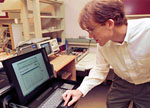
A computer scientist at Washington University in St. Louis has developed technology to stop malicious software – malware – such as viruses and worms long before it even has a chance to reach computers in the home and office. John Lockwood, Ph.D., an assistant professor of computer science at Washington University, and the graduate students that work in his research laboratory have developed a hardware platform called the Field-programmable Port Extender (FPX) that scans for malware transmitted over a network and filters out unwanted data. Full story
Voice restoration surgery is a success

Amy Hancock had three weeks to figure out what her first words would be. Hancock, who lost her voice to laryngeal cancer five and a half years ago, had time to think about it after undergoing an innovative larynx restoration surgery at Barnes-Jewish Hospital on May 23 believed to be the only one of its kind ever attempted in the United States. When her surgeon, Washington University otolaryngologist Randal Paniello, M.D., removed a tube from her throat, allowing her to speak for the first time post-op, Hancock’s first words were: “Thank you Dr. Paniello.” Full story
Researchers pinpoint brain areas that process reality, illusion
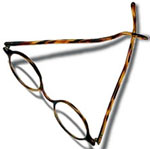
Two studies of the Y chromosome — the chromosome for maleness — provide new insights into the mysteries of maleness and the causes and diagnosis of male infertility. One paper presents the structure of the Y chromosome, and the other compares one region to the chimpanzee Y chromosome. Researchers at Washington University School of Medicine’s Genome Sequencing Center in St. Louis and at the Whitehead Institute for Biomedical Research in Cambridge, Mass., found that the human Y chromosome carries 78 genes, nearly twice the number originally thought. Full story
Revised periodic table slanted toward astronomers

The periodic table isn’t what it used to be, thanks to innovations by a planetary chemist at Washington University in St. Louis. Katharina Lodders, Ph.D., Washington University research associate professor in Earth and Planetary Sciences in Arts & Sciences, has evalutated data from numerous studies including her own and arranged the data into a periodic table slanted toward astronomers and cosmochemists. Full story
‘Heavy metal’ snow on Venus is lead sulfide
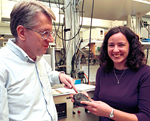
Lead sulfide — also known by its mineral name, galena — is a naturally occurring mineral found in Missouri, other parts of the world, and now. . .other parts of the solar system. Because recent thermodynamic calculations by researchers at Washington University in St. Louis provide plausible evidence that “heavy metal snow,” which blankets the surface of upper altitude Venusian rocks, is composed of both lead and bismuth sulfides. Full story
Small amounts of alcohol or anesthetics may damage the developing brain
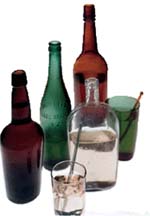
A team of geologists directed by Joshua Smith, Ph.D., assistant professor of earth and planetary sciences at Washington University in St. Louis, have found a well-preserved fossil of a crab within inches of a tail vertebra from a massive plant-eating dinosaur. The find, in Egypt’s Bahariya Oasis, is the first instance of a crab fossil found with a dinosaur fossil. It reveals much about both species and the kind of ecosystem where the fossils were found, thought to be a predator-rich mangrove setting dominated by tree ferns and other coastal plants, similar to Florida’s swampy Everglades. Full story
Award-winning video captures water, oil, mixing

A team consisting of an art student and mechanical engineers at Washington University in St. Louis has made an award-winning movie that captures for the first time the fluid mechanics phenomenon of two things that classically don’t mix, doing just that. Full story
Biofilms inside bladder cells may cause recurrent urinary tract infections
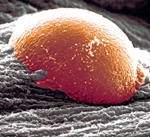
Bacteria that invade bladder cells and grow into structured colonies known as biofilms may be responsible for many recurrent urinary tract infections (UTIs), according to researchers at Washington University School of Medicine in St. Louis. The findings, based on animal studies, offer a new explanation for recurrent UTIs and why the body’s defenses or antibiotic treatments often don’t cure the infections. UTIs, which mainly occur in women, are the second most common type of bacterial infection. Full story
Device detects, traps and deactivates airborne viruses and bacteria using ‘smart’ catalysts
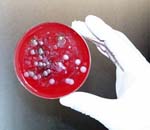
An environmental engineer at Washington University in St. Louis with his doctoral student has patented a device for trapping and deactivating microbial particles. The work is promising in the war on terrorism for deactivating airborne bioagents and bioweapons such as the smallpox virus, anthrax and ricin, and also in routine indoor air ventilation applications such as in buildings and aircraft cabins. Full story
Sequence of human chromosome 7 is fine-tuned and finished
Researchers at Washington University School of Medicine in St. Louis, in collaboration with investigators at seven other centers, have finished sequencing human chromosome 7, the largest human chromosome to be sequenced so far. Their analysis revealed that the chromosome has about 1,150 genes and 940 so-called pseudogenes, stretches of DNA that closely resemble genes but contain some genetic change that prevents them from functioning like a gene. The biological significance of pseudogenes is unknown. Full story
Dinosaur fossil record compiled, analyzed
A graduate student in earth and planetary sciences in Arts & Sciences at Washington University in St. Louis has combed the dinosaur fossil record from T. Rex to songbirds and has compiled the first quantitative analysis of the quality and congruence of that record. Full story
Imaging damaged brain cells in living mice provides Alzheimer’s clues
Using recently developed techniques for imaging individual cells in living animals, a team led by researchers at Washington University School of Medicine in St. Louis has watched as Alzheimer’s-like brain plaques damage mouse brain cells. “We’ve been able to visualize damaged nerve connections in living animals and follow them over time in the same animal. Our next step is to determine whether such damage is reversible,” says principal investigator David M. Holtzman, M.D. Full story
Washington University launches BioMed 21 — a $300 million biomedical science initiative to transform genome research into new medical treatments
Washington University and its School of Medicine today announced they will spend more than $300 million to rapidly bring the new knowledge of the human genetic blueprint to the patient’s bedside and to change how illnesses ranging from diabetes to Alzheimer’s disease to various cancers are understood, diagnosed and successfully treated. This new strategic research initiative is called “BioMed 21,” a reference to its potential to redefine how biomedical research will be conducted and medicine will be practiced as the 21st century unfolds. Full story
Previous year’s drought might predict following year’s mosquito population

So you think you know mosquitoes? Consider the venerable law that rainy weather is the cause of increased mosquito populations. An ecologist at Washington University in St. Louis says if you believe that, you’re all wet. Full story
Alcohol-Dependence gene identified
Investigators at Washington University School of Medicine in St. Louis, Indiana University School of Medicine and other centers have identified a gene that appears to increase the risk of alcoholism. The study is the first to demonstrate an association between this particular gene and alcohol dependence. Full story
Biological clock more influenced by temperature than light
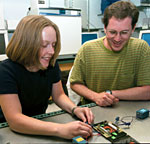
Getting over jet lag may be as simple as changing the temperature —your brain temperature, that is. That’s a theory proposed by Erik Herzog, Ph.D. assistant professor of biology in Arts & Sciences at Washington University in St. Louis. Herzog has found that the biological clocks of rats and mice respond directly to temperature changes.
Embryonic pig cell transplants halt rat diabetes: procedure requires no immune suppression drugs

An experimental cross-species transplant to treat diabetes has passed an early test in rats with better-than-expected results, suggesting the innovative approach might halt type 1 diabetes while greatly reducing the risk of rejection. Scientists at Washington University School of Medicine in St. Louis gave an experimental group of rats with diabetes embryonic pig pancreas cell transplants and antirejection drugs to prevent the rats’ immune systems from destroying the transplants. The control group received only the transplants and no immune suppression drugs. The control group’s transplants grew unmolested by the immune system, surprising researchers, halting the rats’ diabetes and changing the focus of the study. Full story
Psychologists find the higher the bill, the lower the tip percentage

Psychologists at Washington University in St. Louis say you may be cheaper than you think. They have shown that the larger the bill, the smaller the tip percentage that food servers, hair stylists and cab drivers receive. Compiling data from nearly 1,000 tips left in restaurants, hair salons and with cab drivers, the researchers found that the percent of the tip actually decreases with the amount of the bill across all three tipping situations. Their findings also indicate that with bills more than $100, the percent of the tip levels off — if the bill is $200, the server is likely to receive the same percentage as if it were $100. Full story
Colon cancer treatments tailored to patients’ genes

Washington University School of Medicine researchers at the Siteman Cancer Center are customizing therapy for advanced colorectal cancer patients based on differences in their DNA. The goals, according to lead researcher Howard McLeod, Pharm.D., associate professor of medicine, genetics and of molecular biology and pharmacology, are to maximize the benefits of treatment and reduce the risk of a harmful reaction. “We are using genetics to decide which therapy is best for a cancer patient,” says McLeod. Full story